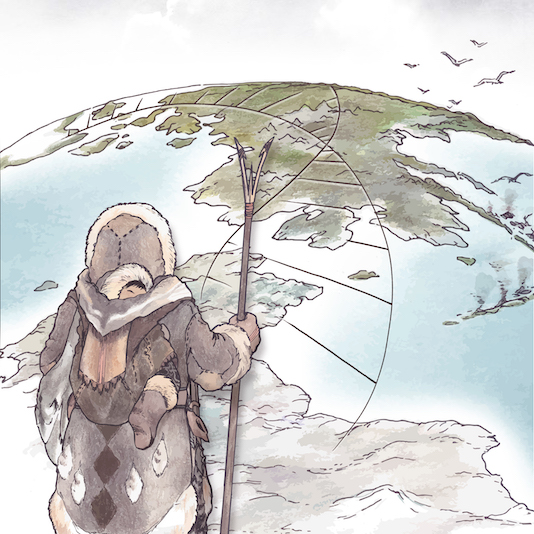Flegontov et al. 2019

Authors: Pavel Flegontov, N Ezgi Altınışık, Piya Changmai, Nadin Rohland, Swapan Mallick, Nicole Adamski, Deborah A Bolnick, Nasreen Broomandkhoshbacht, Francesca Candilio, Brendan J Culleton, Olga Flegontova, T Max Friesen, Choongwon Jeong, Thomas K Harper, Denise Keating, Douglas J Kennett, Alexander M Kim, Thiseas C Lamnidis, Ann Marie Lawson, Iñigo Olalde, Jonas Oppenheimer, Ben A Potter, Jennifer Raff, Robert A Sattler, Pontus Skoglund, Kristin Stewardson, Edward J Vajda, Sergey Vasilyev, Elizaveta Veselovskaya, M Geoffrey Hayes, Dennis H O'Rourke, Johannes Krause, Ron Pinhasi, David Reich and Stephan Schiffels
Abstract: Much of the American Arctic was first settled 5,000 years ago, by groups of people known as Palaeo-Eskimos. They were subsequently joined and largely displaced around 1,000 years ago by ancestors of the present-day Inuit and Yup'ik1-3. The genetic relationship between Palaeo-Eskimos and Native American, Inuit, Yup'ik and Aleut populations remains uncertain4-6. Here we present genomic data for 48 ancient individuals from Chukotka, East Siberia, the Aleutian Islands, Alaska, and the Canadian Arctic. We co-analyse these data with data from present-day Alaskan Iñupiat and West Siberian populations and published genomes. Using methods based on rare-allele and haplotype sharing, as well as established techniques4,7-9, we show that Palaeo-Eskimo-related ancestry is ubiquitous among people who speak Na-Dene and Eskimo-Aleut languages. We develop a comprehensive model for the Holocene peopling events of Chukotka and North America, and show that Na-Dene-speaking peoples, people of the Aleutian Islands, and Yup'ik and Inuit across the Arctic region all share ancestry from a single Palaeo-Eskimo-related Siberian source.